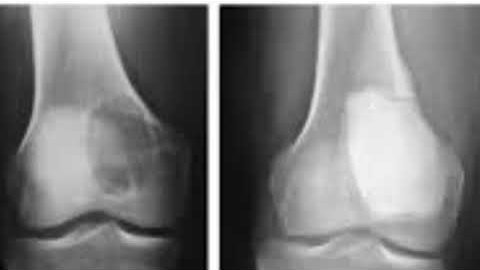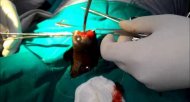How to Identify Moles and Melanoma - OnlineDermClinic
http://www.onlinedermclinic.com Learn the difference between atypical moles, dysplastic moles, and melanoma in this free educational tutorial. Watch more videos about skin diseases, treatment options, and try our free "diagnosis wizard" we call DermaLearn at OnlineDermClinic.com. The number of skin cancers is rising at an alarming rate. In the U.S., the risk for melanoma is now 1 in 58. This is up from 1 in 1500 in 1930. If melanoma is diagnosed early, the chance for cure approaches 100%; however, for widespread metastatic melanoma, survival is only 6 to 9 months. What you don't know can harm you or prove fatal. Avoid being a statistic and learn the warning signs and causes of this potentially curable form of skin cancer.Key points Typically Appear in sun exposed areas of skin tend to be less than 6 mm in diameter, have an orderly, homogenous surface with a symmetrical, sharply demarcated border, round or oval shape, and have a light to dark brown color. Are categorized as junctional, compound, or intradermal based upon their location in the epidermis or dermis Begin to appear within the first 6 months of life, most are present by the age of 30, and slowly regress with age. Most Nevi are benign, however atypical MN or a large number of nevi should be examined and followed by a dermatologist Common Acquired Melanocytic Nevi, or moles, are clusters of melanocytes that develop primarily due to genetic factors. However, there is some evidence that they may be created by a stimulus, such as ultraviolet radiation, that causes a proliferation of melanocytes. Melanocytes are pigment (melanin) producing cells and are formed from neural crest cells that migrate to the skin, central nervous system, eyes, and ears during normal embryogenesis. Melanocytic Nevi are categorized by their location in the skin as junctional nevus (epidermis), intradermal nevus (dermis), or compound nevus (both dermis and epidermis). Melanocytes begin in the basal layer of the epidermis coming together to form junctional nevi. Over time melanocytes may migrate down through the epidermis-dermis junction to the dermis forming compound and intradermal nevi respectively. Generally, Common Acquired Melanocytic Nevi first appear as brown papules or macules, smaller than 6mm in diameter. As we age, more nevi become visible and their appearance begins to change so that the nevi lose their pigmentation, and become more elevated and dome-shaped. Melanocytic nevi are generally light to dark brown, but may range in color from skin colored to jet black. Melanocytic Nevi appear in both men and women. Moles are more prevalent in light skinned people then dark skinned people. Darker skinned people tend to have MN appear on the palms, soles of their feet, and underneath their fingernails, while Light skinned people are more likely to have moles appear on their trunks and extremities. Melanocytic nevi first appear in early childhood and usually stop appearing by early adulthood. For this reason, new moles in middle or late adulthood should carry a higher suspicion for Melanoma. Most adults will have 10-30 moles on their body. Differential Diagnosis · Atypical Mole(Dysplastic nevus) · Melanoma, Malignant Melanoma · Congenital Nevi · Given their different appearances, Junctional, Intradermal, and Compound Nevi have their own differential diagnoses. Diagnosis Key points Clinical presentation is the most important aspect of diagnosis Histologic examination confirms diagnosis Diagnosis is primarily made by history and clinical presentation. When the clinical picture is murky, a complete excisional biopsy and histopathologic evaluation of the mole is made to rule out Melanoma. The histologic findings of small, uniform, symmetrical, well circumscribed nests of melanocytes are reassuring for melanocytic nevi. Treatment Key points In most cases moles do not require treatment Suspicious moles should be removed and examined Prevent skin damage from sun exposure Melanocytic Nevi are, by definition, benign and most moles remain benign throughout a person's lifetime. Therefore, most moles will never need to be treated. However, suspicion that a mole may be a Melanoma, a change in the size, shape, or pigmentation of the mole, chronic irritation, or cosmetic concerns are reasons that the melanocytic nevi may be removed via excisional biopsy. When this is performed, if possible, the entire lesion should be removed and undergo histologic evaluation to rule out malignancy. It is important for individuals who have a significant number of nevi to have counseling about the dangers of excessive sun exposure, skin protection, and to undergo periodic total skin inspections by a dermatologist.





















